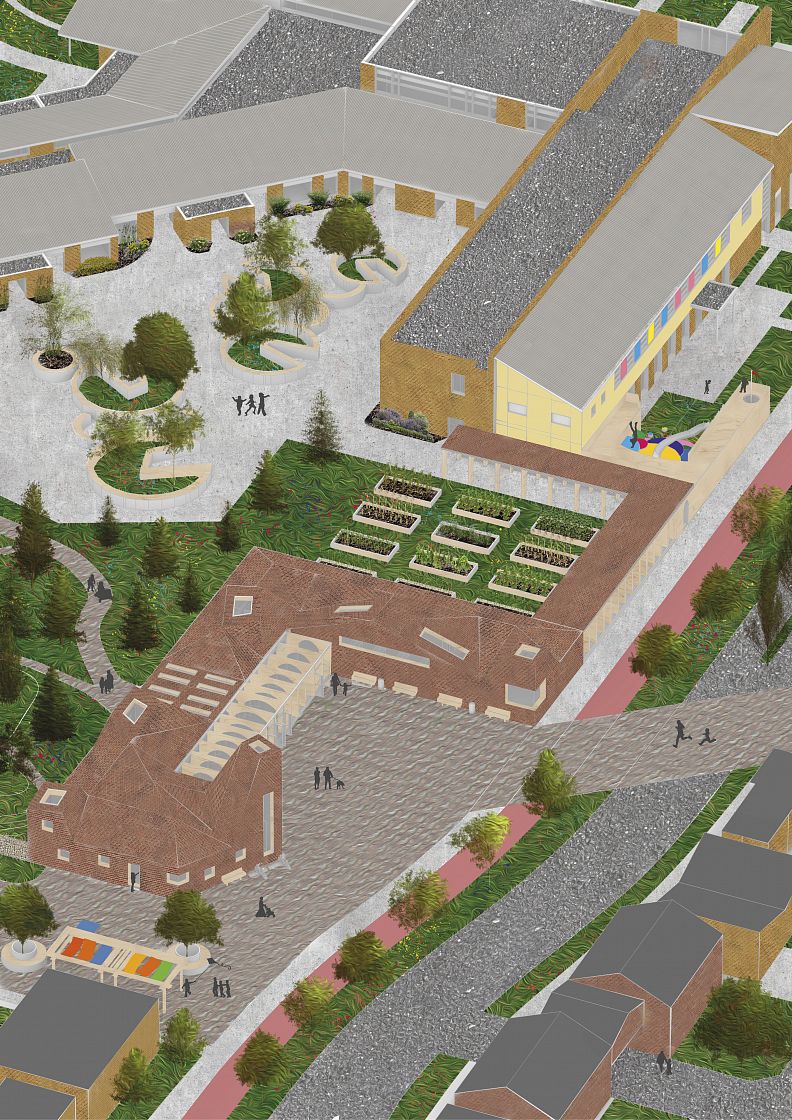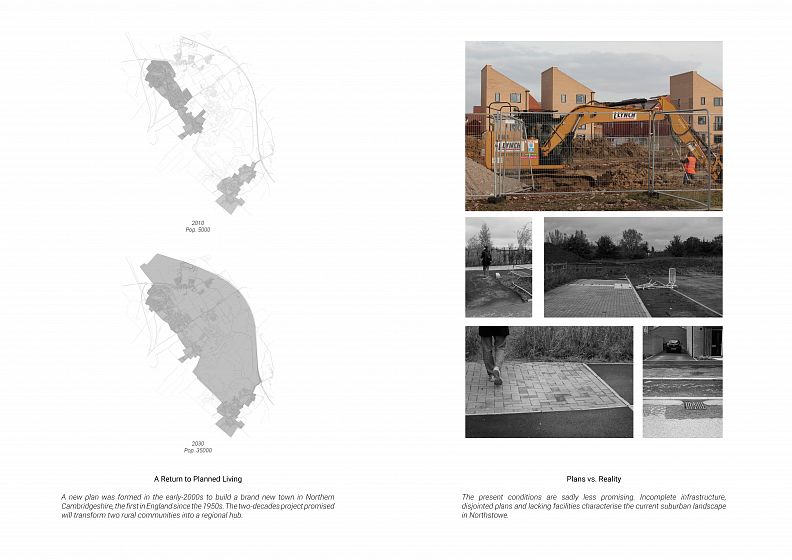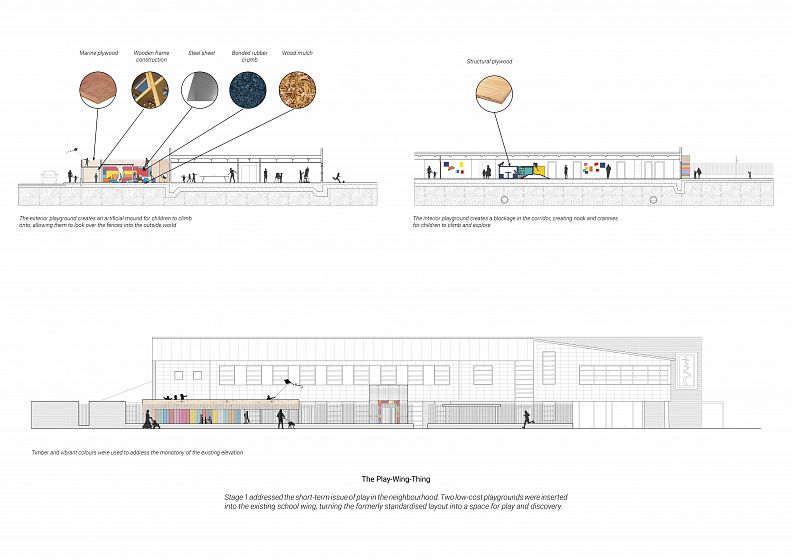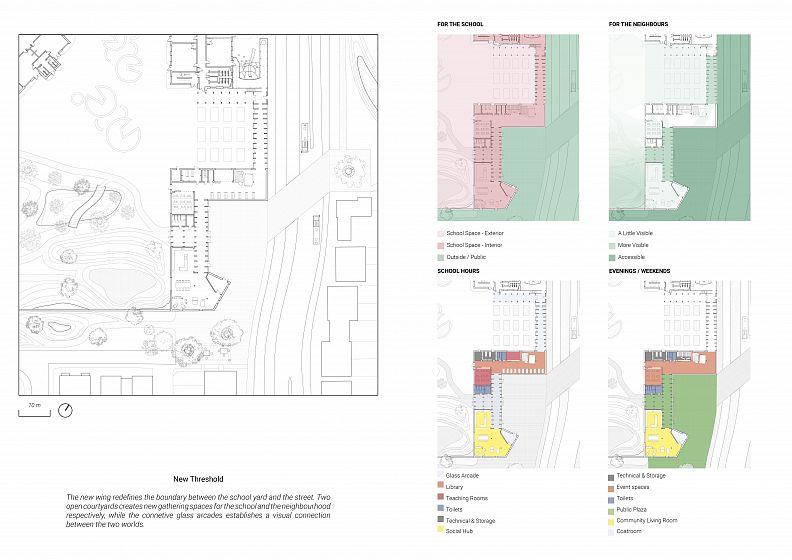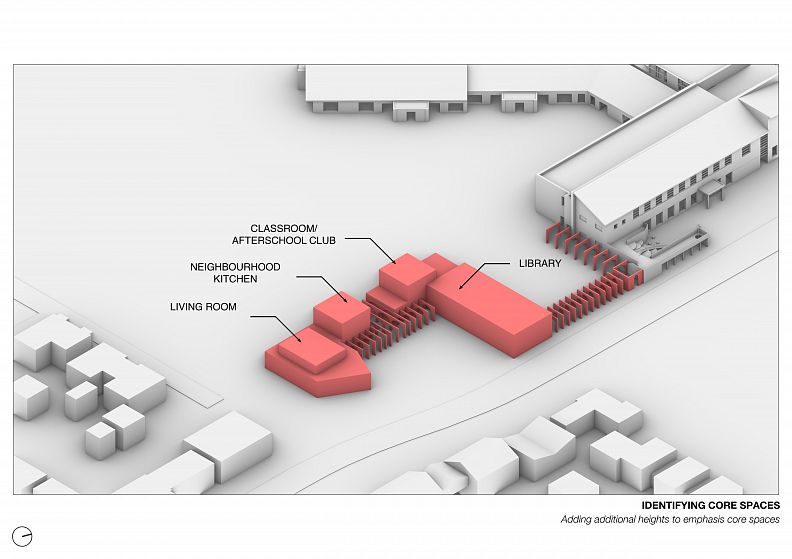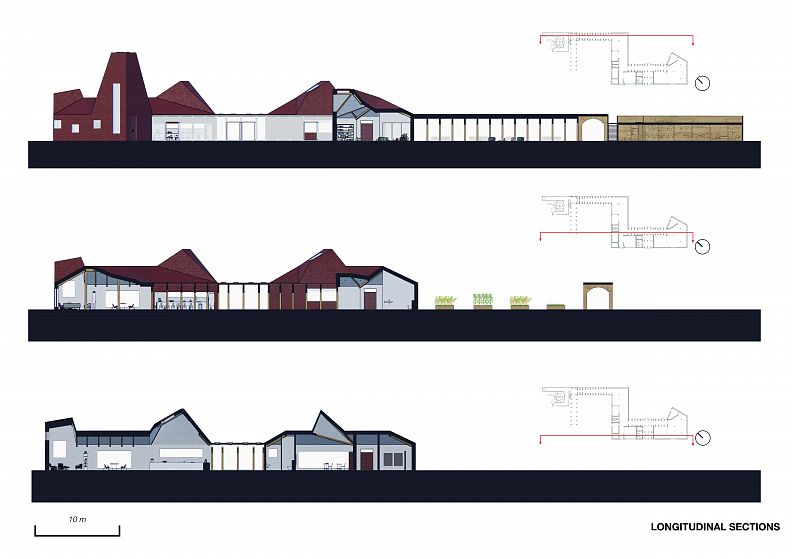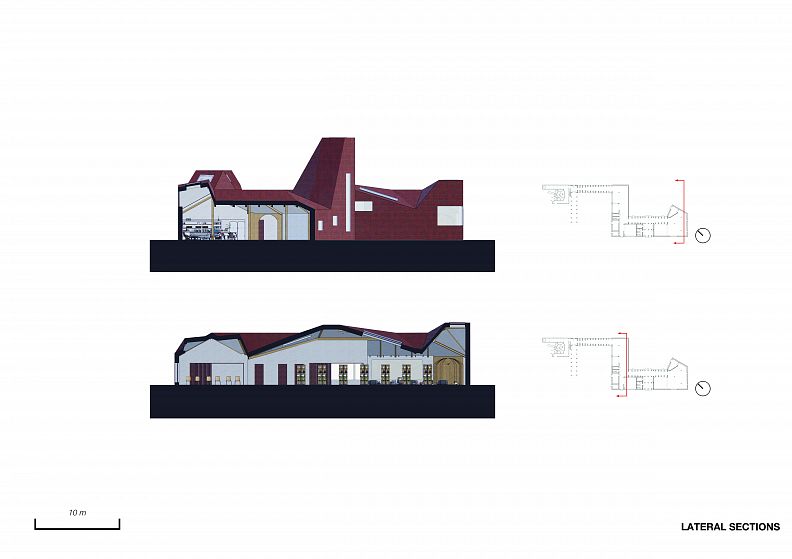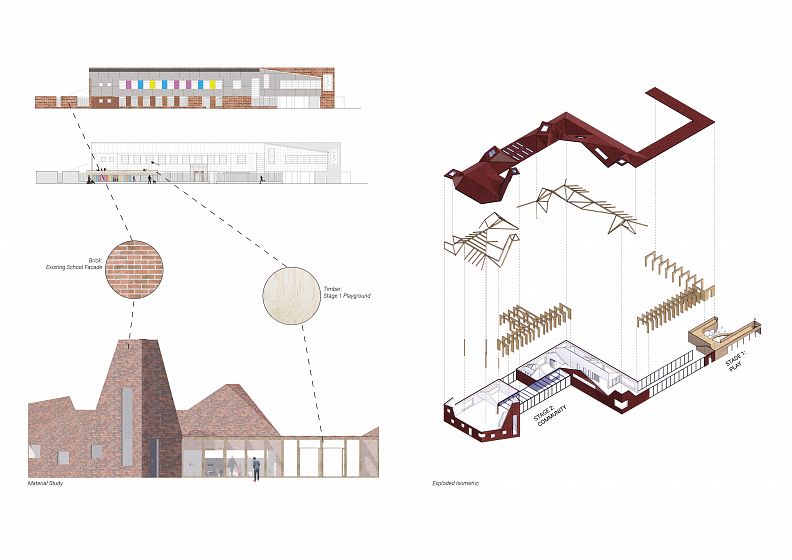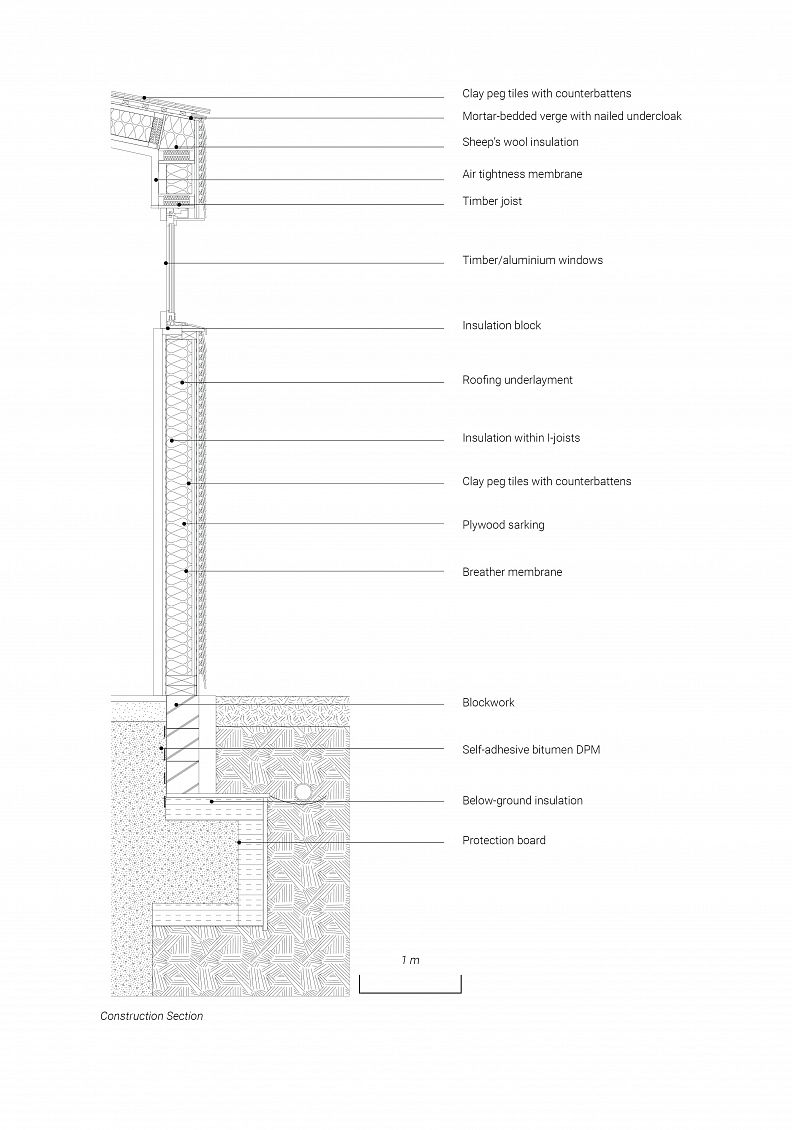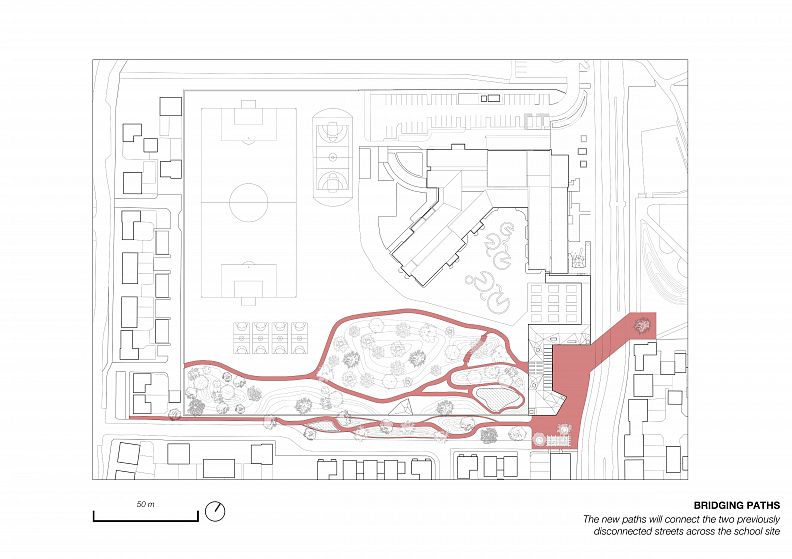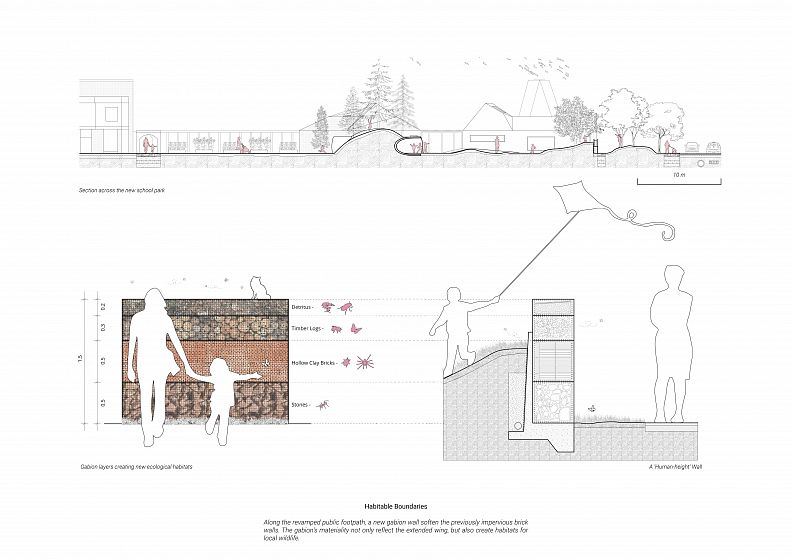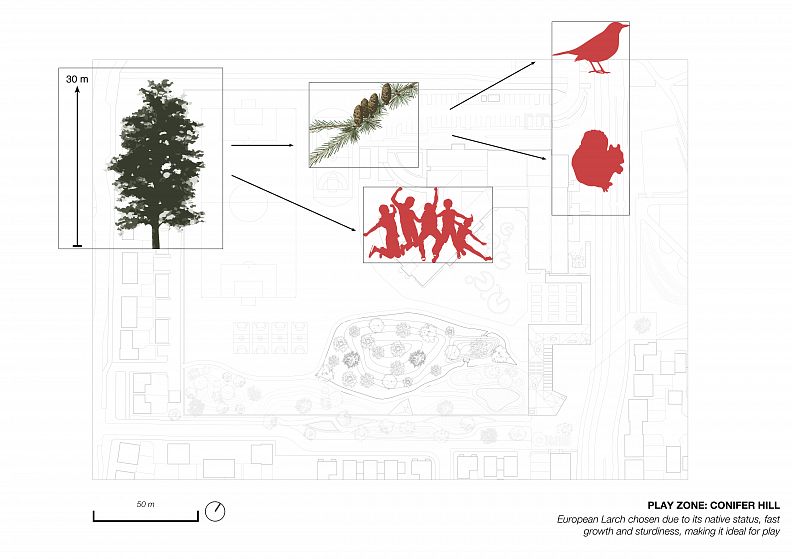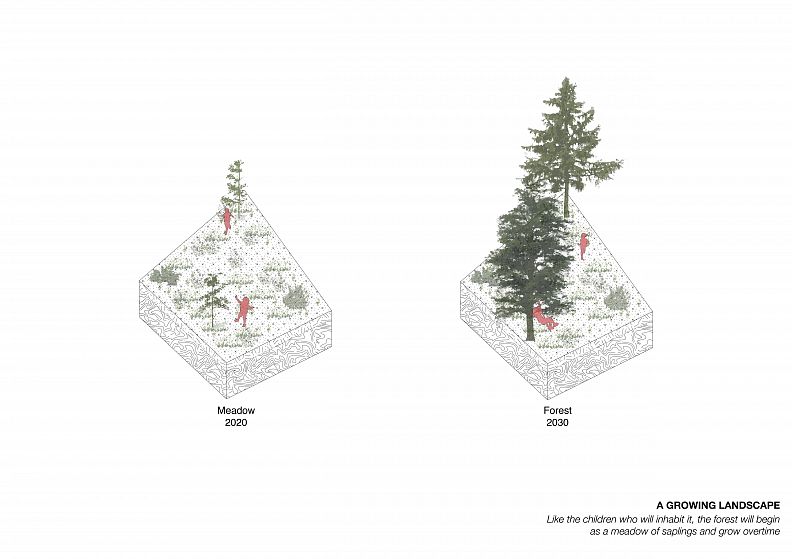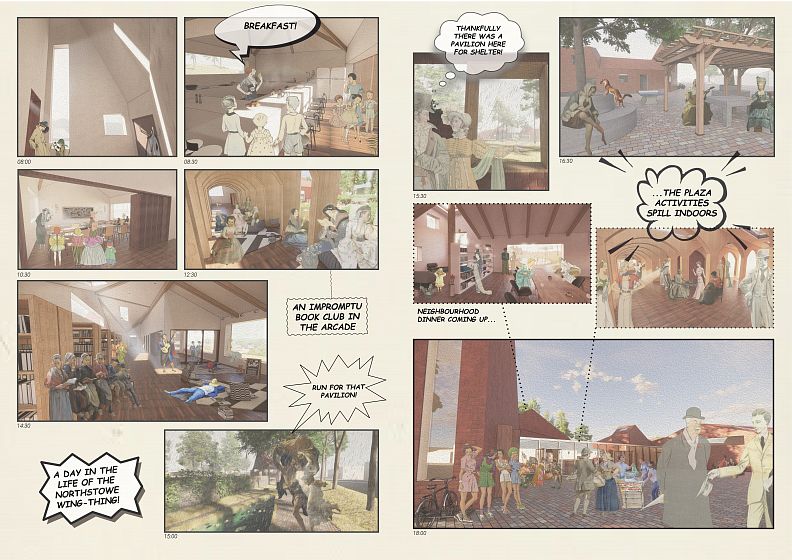The Northstowe Community-Wing-Thing

Idea projektu
BACKGROUND
The project was set against the context of the ongoing Northstowe development in Cambridgeshire, UK. As the first planned town development in England since the 1950s, Northstowe presented unprecedented challenges in terms of creating an entire community from scratch.
My project stemmed from a year-long study of Northstowe, primarily focused its ad-hoc community centre (The Northstowe Micro-Wing-Thing), which emerged through a compromise between the local council, resident and primary school in response to a critical lack of social infrastructure in the town. This community centre occupied an unused wing of the local primary school, bringing community life into a previously institutional space. While it was only intended to be a temporary solution, the combination of civic and institutional uses in such proximity presented a novel possibility for civic architecture.
GOALS
The goal of my design project was two-fold. Firstly, it sought to help relieve the short-term lack of community infrastructure by enhancing the current ad-hoc community wing to better serve as a safe space for play for local children. Secondly, it aimed to explore the long-term potentials of the blend between civic and institutional uses. By establishing a permanent civic space within a school grounds, new connections between the school and its community can be made and the communal spirit of the micro-wing is preserved.
Popis projektu
The project was organised into two distinct yet complementary stages in response to the two goals I had set out. Both stages corresponded to the overarching idea of the 'Thing', inspired by the Old Norse term "þing" meaning "assembly" or "of the people".
STAGE 1: INTERVENTION
Stage 1 (The Play-Wing-Thing) introduced a series of fast-build and cost-effective interventions oriented around children and play. Indoors, a new plywood structure 'disrupt' the rigid plan of the old school wing, turning it into a space for discovery and play. New routes were established and nooks and crannies allow children to explore their imaginations safe from the chaos of the ongoing construction work outside. The creation of new openings also increased the flexibility of the space, allowing it to host a range of events for adults and children alike. Outdoors, a new timber structure converts the existing courtyard into a play zone for children. A small hill allows the children to rise above the walls which used to segregate the school from the outside world, allowing them to look outwards. A flight of stairs on the back of the structure connect the new play-wing to the schoolyard. The old boundaries are otherwise maintained, but playful colours and an open plywood gallery invite pedestrians to glance into the life within.
STAGE 2: EXTENSION
Stage 2 conceptualised an extension to the school which could be alternated between school and public uses. A previously under-used corner of the schoolyard was chosen as the site for the new wing. Two glass-clad arcades connect the old wings to the new. Glulam arches of varying widths create an internal funnel into the new space while simultaneously allowing pedestrians to look into the schoolyard. The S-shaped plan outlined two new courtyards: the internal one serving as a new school garden; and the external one forming a new public corner/plaza. The location of the project not only established a new public front for the school but also functioned as a new junction between the Eastern and Western halves of the neighbourhood - thus placing the primary school at the centre of the renewed urban plan. Internally, the glass arcades and movable room dividers ensure a high degree of flexibility, allowing the school to choose how much of their new wing they wish to open. The end result is a highly adaptable space which merges civic and educational functions. During school days, the new wing can function as a semi-detached social space for the school: where recess gathering, teacher's breaks, culinary classes and after-school care take place. During after-school hours, the doors in the glass arcades can be shut, severing the connection to the main school building. The arcade adjacent to the plaza can be opened, connecting the street to the new school park, and transforming the wing into a full-fledged community centre.
Technické informace
MATERIAL & STRUCTURE
The primary material of Stage 1 was marine-grade plywood. The lightweight timber-post construction can be erected in situ without the need for heavy machinery and disruptions to the school, thus achieving short building time and low-cost. The playing hill is formed by stacks of circular steel drums coated with bonded resin crumbs and infilled with sand. Overall, the materiality echoes the expedient nature of the first stage and the language of scaffoldings found across Northstowe.
The material choice of Stage 2 combined the use of timber from the Stage 1 playgrounds with the reddish clay bricks found on the majority of Northstowe's buildings. The geometric form of the new extension drew from the angular gables of Northstowe's townhouses. The various peaks signify core internal spaces and form a hierarchy of heights guiding visitors to the main entrance. Glulam arches form a passage from the old school wing and carry the timber language into the new wing. For the main extension wing, a monolithic and uniform sense was achieved through the use of clay peg tiles. These handmade tiles have a rich history in vernacular use and can be locally sourced.
NATURAL LIGHTING
The different peaks on the roof correspond to core spaces within the building, with respective skylight openings angled to catch sunlight at different times of the day based on the approximate usage. For instance, rooms mainly reserved for school use have Eastern facing skylights to gain the most lights in the early hours of the day. Meanwhile, the social spaces have West-facing openings to provide the best lighting and view during the evening, when social gatherings are likely to take place.
LANDSCAPE & URBAN STRATEGY
As a part of the total urban strategy, the project also included landscape elements in the form of a revamped school park and redesigned pedestrian path. A lower gabion wall will replace and soften the previously impervious brick walls which enclosed the schoolyard. The different gabions layers each contain materials drawn from the extension wing's materiality and from nearby construction sites. The new wall not only creates a more permeable and 'human' boundary but also form a 'green' wall by providing habitation for local insects and fauna.
The previously tarmac-covered schoolyard was converted into a new green space. Three planting zones make up this new school park, each based on their intended usage and characteristics. A small hill of rowan to the Southeast provide shelter and a food source for local birds, squirrels and insects. The central zone is planted with European larch, a native and fast-growing species suitable for climbing and play. Finally, the revamped pedestrian path hosts a blend of common and copper beech, a deciduous which changes colour with the seasons and creates a pleasing walk for the neighbourhood.
